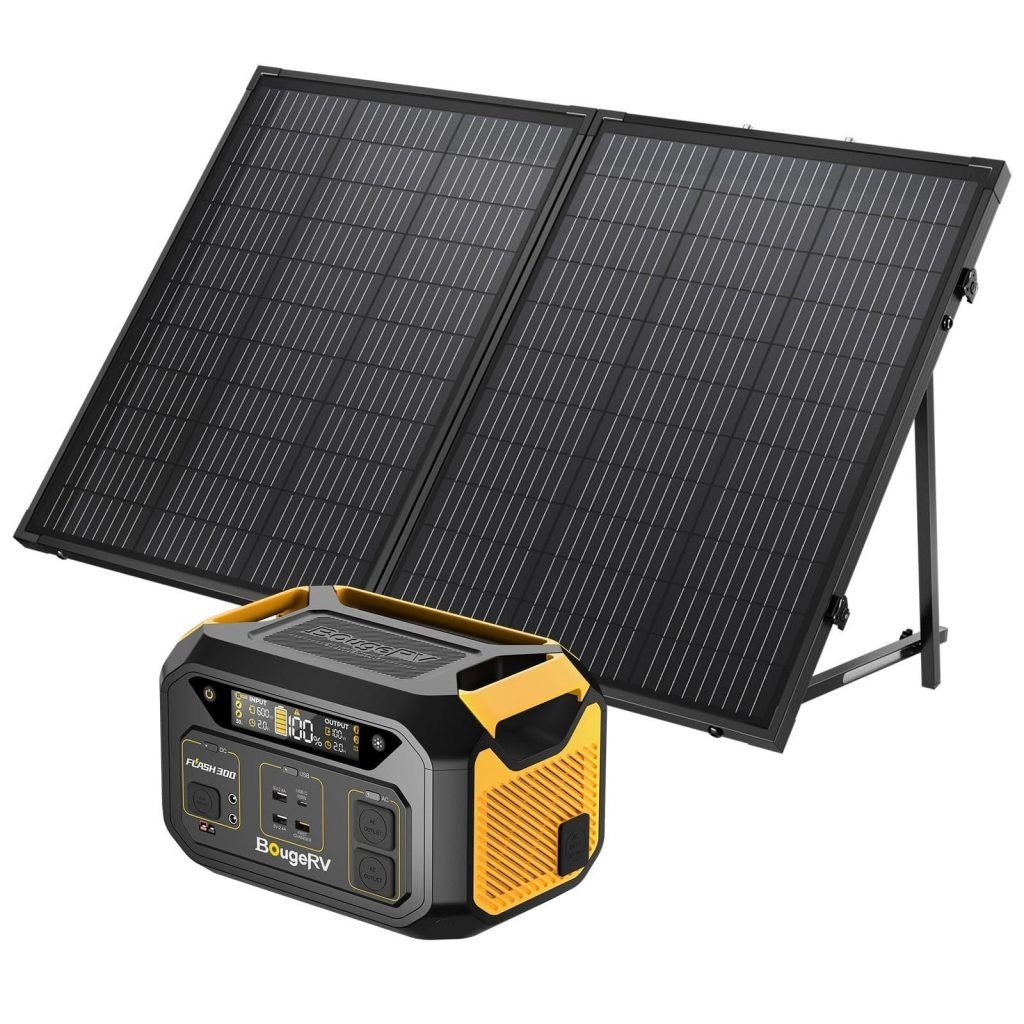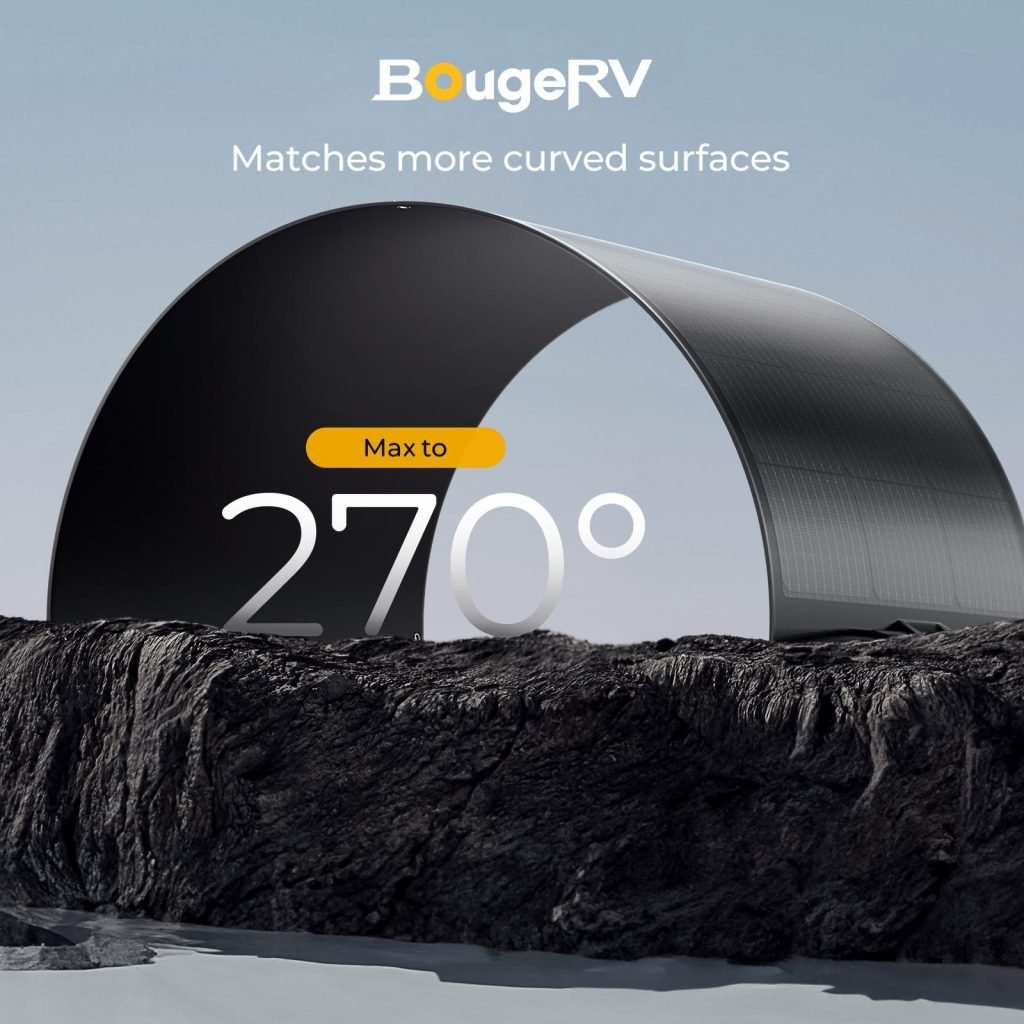Solar energy has become a cornerstone of the global shift toward renewable energy. With the increasing demand for clean, sustainable power solutions, 300-watt solar panels are gaining popularity due to their efficiency, versatility, and affordability. These panels offer enough power for a wide range of applications, from residential setups to off-grid adventures, making them an ideal choice for those looking to harness the sun’s energy.
In this article, we’ll explore the uses, importance, and reasons why 300-watt solar panels are becoming an essential component of modern energy solutions. Whether you’re powering your home, RV, or off-grid cabin, understanding the capabilities and benefits of 300-watt solar panels can help you make informed decisions about your energy needs.
What Is a 300-Watt Solar Panel?
A 300-watt solar panel is a photovoltaic (PV) panel capable of producing up to 300 watts of electricity under optimal conditions. Solar panels work by converting sunlight into electricity through the use of semiconductor materials—most commonly silicon. When sunlight hits these materials, it excites electrons, generating direct current (DC) electricity. This energy can be used to power devices, stored in batteries for later use, or converted to alternating current (AC) for home and grid use via an inverter.
A 300-watt solar panel is considered medium-sized in the spectrum of solar panel outputs, offering a balance between power generation and physical size. These panels are highly efficient and can generate a substantial amount of electricity while occupying less space than some larger alternatives, making them suitable for a variety of environments and energy needs.
Key Uses of a 300-Watt Solar Panel

The versatility of 300-watt solar panels allows them to be used in a wide range of applications. Here are some of the most common ways they are utilized:
- Residential Solar Power Systems: One of the most common uses for 300-watt solar panels is in residential solar power setups. Homeowners can install these panels on their roofs or in their yards to generate electricity for household use. A system with several 300-watt panels can significantly reduce energy bills by offsetting the amount of power drawn from the grid. Depending on the size of the installation, 300-watt panels can generate enough electricity to power everything from lights and appliances to heating and cooling systems.
- Off-Grid Cabins and Tiny Homes: For those living off the grid or in tiny homes, 300-watt solar panels provide a reliable source of renewable energy. A single 300-watt panel, or a small array, can generate enough power to run essential systems such as lighting, refrigeration, and small appliances. In off-grid scenarios, the energy produced during the day can be stored in batteries for use during the night or on cloudy days. This makes 300-watt panels a popular choice for people who want to live sustainably without relying on external power sources.
- RVs and Mobile Homes: Many RV owners and mobile home dwellers use 300-watt solar panels to generate electricity while on the road. These panels can be mounted on the roof of an RV and used to charge batteries or directly power onboard systems. With a 300-watt solar panel, travelers can power lights, fans, refrigerators, and even some small electronics, reducing the need to rely on noisy, fuel-dependent generators or campground hookups. This allows for greater freedom when camping in remote areas, often referred to as boondocking or dry camping.
- Boats and Marine Applications: Solar energy is becoming increasingly popular in marine environments. A 300-watt solar panel can be used on boats to generate electricity for navigation systems, communication devices, lighting, and refrigeration. Because boats often operate in remote areas without access to grid power, solar panels provide a clean, renewable energy solution that allows sailors to stay powered for extended periods without needing to return to port for fuel.
- Supplementing Grid Power: Even if you are connected to the grid, using 300-watt solar panels as part of a hybrid system can help reduce your overall energy consumption. By generating solar power during the day, homeowners can lower their reliance on grid electricity, leading to lower energy bills. Additionally, solar panels can provide backup power during outages, ensuring that essential appliances and systems remain operational even when the grid goes down.
Why a 300-Watt Solar Panel Is Important

The importance of 300-watt solar panels lies in their ability to provide an efficient, scalable, and eco-friendly energy solution. Below are some of the reasons why 300-watt solar panels are becoming an important part of the renewable energy movement:
- Energy Efficiency: A 300-watt solar panel is designed to capture and convert sunlight into electricity with high efficiency. This means that even on cloudy days or in less-than-ideal conditions, these panels can still produce a significant amount of power. The higher efficiency of 300-watt panels makes them ideal for residential and mobile applications where space may be limited but energy demands are relatively high. By using fewer panels to generate the same amount of energy, homeowners and travelers can maximize their energy output without sacrificing valuable roof or deck space.
- Environmentally Friendly: Solar energy is one of the cleanest and most sustainable forms of power generation available. By using 300-watt solar panels, individuals can significantly reduce their reliance on fossil fuels and lower their carbon footprint. This is important not only for those who want to live more sustainably but also for the global effort to reduce greenhouse gas emissions and combat climate change. Every kilowatt of solar energy produced helps offset the use of nonrenewable energy sources, contributing to a cleaner, greener planet.
- Cost Savings Over Time: While the initial investment in solar panels can be substantial, the long-term savings are worth it. Once installed, 300-watt solar panels provide free electricity from the sun, helping to reduce or even eliminate energy bills. Depending on the size of the system and local energy costs, solar panels can pay for themselves within a few years, after which all the electricity generated is essentially free. Additionally, many regions offer tax incentives, rebates, and other financial benefits for installing solar panels, further reducing the upfront costs.
- Energy Independence: One of the greatest benefits of using solar panels is the ability to generate your own electricity. A 300-watt solar panel can provide enough power to run essential systems in homes, RVs, or off-grid cabins, reducing reliance on the grid or external power sources. This energy independence is particularly valuable in remote locations where access to grid electricity is limited or in situations where power outages are common. With solar panels, individuals have greater control over their energy production and consumption.
- Versatility and Scalability: A 300-watt solar panel is versatile enough to be used in a variety of settings, from residential rooftops to mobile homes and boats. Whether you’re looking to power a small off-grid cabin or supplement your home’s energy needs, these panels offer the flexibility to scale your solar system based on your energy requirements. Additional panels can be added to increase power output as needed, making it easy to expand your system over time.
Key Considerations When Choosing a 300-Watt Solar Panel
When selecting a 300-watt solar panel for your energy needs, there are a few key factors to consider to ensure you make the right choice:
- Efficiency and Performance: Look for panels with a high-efficiency rating, as this will determine how much sunlight is converted into usable electricity. Higher efficiency panels may be more expensive upfront but will generate more power over time, making them a worthwhile investment.
- Installation Space: Consider how much space you have available for installation. A 300-watt panel will take up more space than smaller panels, so it’s important to measure your roof, deck, or available surface area to ensure the panel will fit comfortably.
- Durability and Weather Resistance: Since solar panels are often exposed to the elements, choose panels that are built to withstand harsh weather conditions such as wind, rain, and snow. High-quality panels are designed for long-term outdoor use and should come with warranties that guarantee their durability.
- System Compatibility: Ensure that the solar panel is compatible with your existing battery bank, inverter, and charge controller, if you have one. Proper system integration is key to maximizing the performance and longevity of your solar setup.
Conclusion
A 300-watt solar panel is a powerful and efficient way to harness the sun’s energy for a wide range of applications. Whether you’re powering a home, RV, or off-grid setup, these panels offer an eco-friendly solution that reduces energy costs, lowers your carbon footprint, and provides energy independence. With their versatility, durability, and scalability, 300-watt solar panels are an excellent investment for anyone looking to transition to renewable energy.
By embracing solar power, individuals not only contribute to a more sustainable future but also enjoy the long-term financial and environmental benefits that come with generating clean energy.
![]()



